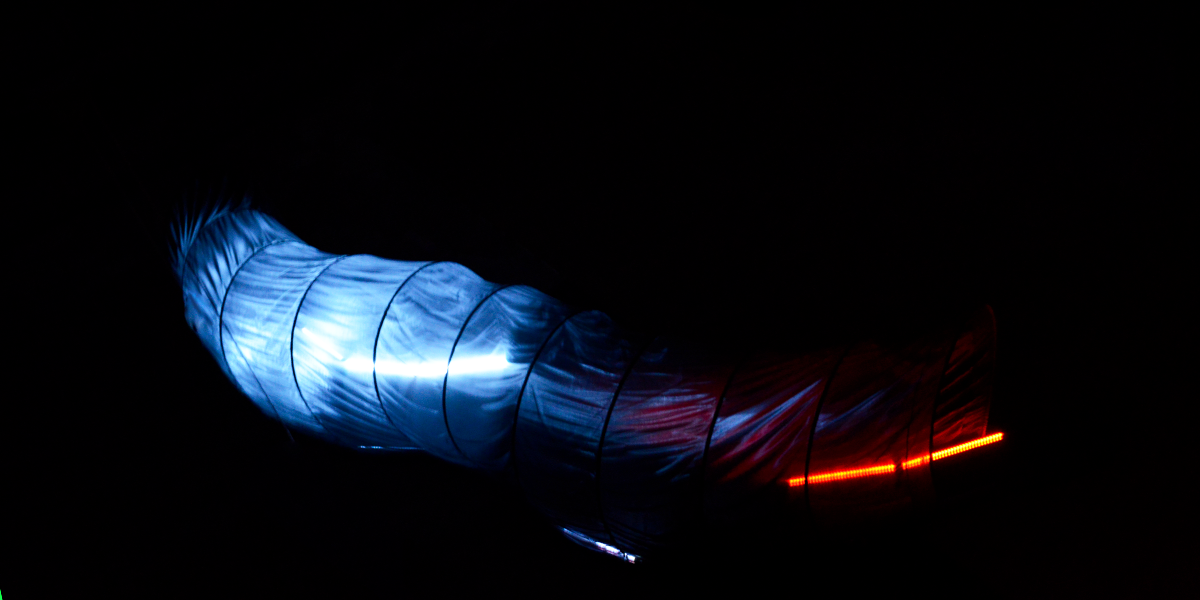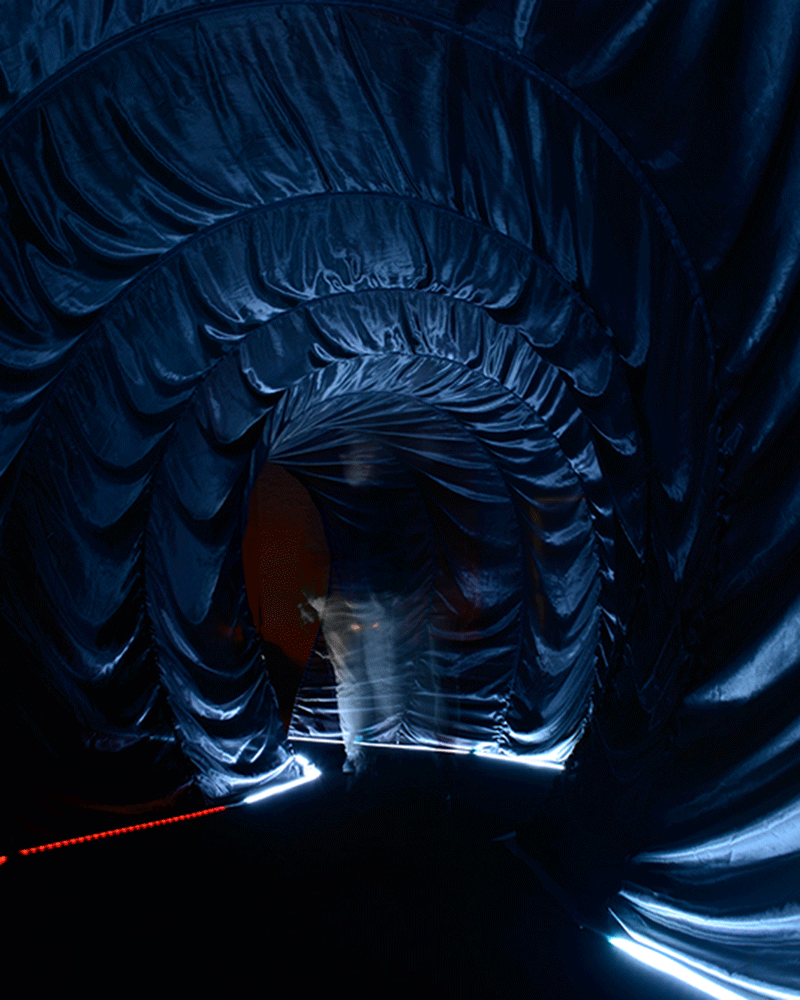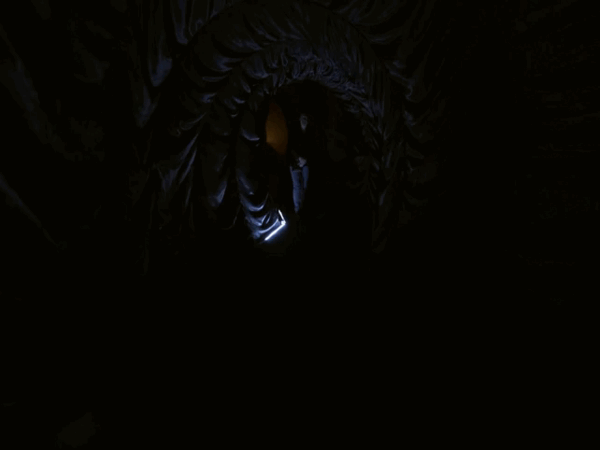In cooperation with Carina Hinterkircher
The physical environment and the atmosphere of a room have a profound impact on its occupants. The same situation can be perceived and approached differently based on the influence of the space. The level of communication and interaction depends on how the environment affects the individuals involved. An architectural design that takes into account its surroundings and the people within it can actively respond, interact, and become an integral part of the communication process. Such a space can be described as a thematic framework, with a unifying element that interacts regardless of the medium involved.


“Costae” is an interactive lightweight architecture located in the KunstKulturKirche Allerheiligen. The design of the pavilion includes a supportive structure and a responsive membrane, allowing visitors inside to engage with the space. Through movement, lighting, and a multidimensional projection, an immersive experience is created.
STUDIES OF MATERIAL
The selection of materials plays a crucial role in the success of the project as it significantly influences the perception of space. Besides meeting all the necessary fire regulations to ensure safety in public spaces, the chosen materials needed to interact harmoniously with another key element: light. The materials serve as the connecting factor among the three essential aspects of the project: light, movement, and space.










THE MATERIAL IS THE MEDIUM
The material must convey the perception of space when illuminated. It serves as the medium of communication, while movement and light are the messages being conveyed. After considering various material options and conducting a thorough study of their luminous reactions, a woven Trevira CS material was chosen. Trevira is a material that was discovered in the 90s, and its chemical composition makes it highly resistant to inflammation. The delicate and intricate nature of the material makes it well-suited for three-dimensional frontal projections. One crucial characteristic is its almost imperceptible dark color when there is no surrounding light present.








